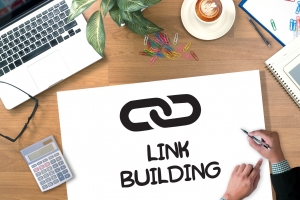Suffering from stagnant search rankings? It’s probably time to reassess your social backlinks strategy.
However, increasing that SERP ranking through social media requires more than just signing up for a free account.
In fact, it’s not the pages themselves that help you rank. It’s every share, like, comment, and the mere mention of your website on social media that pushes you up the ranks (otherwise known as social engagements).
Most importantly, you want people to engage with your social backlinks to keep that link juice flowing.
You don’t want to waste your time on social backlinks tips that don’t work, so let’s take a look at some cold hard data to get you started on the right path.
How Google Ranks Social Media Engagements
To Google, these engagements are processed as “social signals” to increase your ranking.
Take a look at the following social signals from Google’s top 200 search ranking factors:
- Total number of tweets where your website is mentioned.
- Total number of Facebook page likes.
- Total number of Facebook page and post shares.
- Popularity or “page authority” of your Facebook pages.
- Total Number of pins on Pinterest.
- Total Reddit upvotes on posts that mention your name or website.
- Total number of “+1’s” on Google Plus.
- Your social media page “age.” The older and more active your pages are, the stronger your social signals are as well.
As you can see, it’s all about engagement.
This means driving engagement should be the primary goal of your social backlinks strategy.
Encouraging this engagement isn’t as hard as you think either. Keeping this data in mind, let’s discuss the easiest way you can generate social backlinks that churn out signals.
Promote Your Website In Every Social Profile
Let’s start with the easiest social backlinks tip in existence.
The first thing you need to do is to add your website and company name to every social media account you have for your business.
Every social media network, from Facebook to Pinterest, has “about” sections that let you clearly feature your website.
Remember how Google uses social media “authority” as a ranking signal?
After you add your website, you will need to verify your website link with that social network to further boost your social media “authority” with google.
All four social media heavyweights, Facebook, Google+, Twitter, and Pinterest, have options for website verification.
How To Improve Your Content To Generate Social Backlinks
People engage with content that inspires them. It’s that simple.
Does this mean you have to be a Pulitzer prize-winning writer or an oscar-winning director to create high-quality content that gets shares? Not in the slightest.
In fact, sometimes less is more.
Keep It Short and Sweet
Just look at Twitter. While you’re limited to only 140 characters, this doesn’t stop people from retweeting, liking, and embedding your tweets on their blog.
If your Facebook posts read more like novels, try cutting them down to just 40 to 140 characters long.
When sharing a piece of content, think of your social media post as a “pitch” to your audience. Ask yourself what the most attention-grabbing aspect of the content is. What is the over-arching message of the content?
Share Lots of Visual Material
When it comes to marketing, whether it’s online or traditional, visual content is king.
People are more likely to remember your brand if you published visual content, and we have the data to prove it. Check out these findings from recent studies published in Fast Company and Psychology Today:
- 65% of people are visual learners.
- Our brains actually prefer visual storytelling over plain lists of facts.
- Visual material is “processed 60,000 times faster than text.”
- Tweets that contain visuals are 94% more likely to be shared.
- Content that contains visuals are 50x more likely to land on the first page of SERPS.
There are several types of visual content formats to choose from to increase your social backlinks.
Social media makes it so easy to generate visual content too. For example, when you share a post from your blog on Facebook, an attractive “link card” generates automatically to grab the attention of your audience.
To help you diversify and prioritize your visual content for maximum exposure, consider these findings from Business2Community and Social Media Examiner’s latest industry trends report:
- Go live with your content: More than 50% of content marketers are upping their social media content with live video streaming.
- Keep creating videos: videos continue to be a major generator for social backlinks, and marketers are expected to increase video content by 73%.
- 63% of marketers surveys are expected to expand their YouTube Marketing strategies.
- Infographics demand skyrocketed by 800%!
- Infographics are shared 3x more on social media.
- 42% of markers are expected to increase their use of Pinterest
- Blogs with visuals are the second most popular form of content for social media marketing.
Leverage The Power of Google+
Remember that it’s Google that you’re trying to please with your social backlinks.
If you want to get in Google’s good graces, it never hurts to generate engagement through their own social media project.
Remember how you learned to add your website link to every profile? Here, you’re going to take it a step further and add your link to various Google+ sections.
Getting started on Google+ is so easy. Here’s how you do it:
- Populate your Google+ link section with your main website and all your social media pages.
- Start or join a Google+ community so you can share high-quality content with your backlink.
- Add your website backlink to your community’s description section.
- Add your company website to your Google business listing.
- Write attention-grabbing headlines for your Google+ posts.
- Add relevant, thought-provoking comments on Google+ posts that are relevant to your niche. These link directly back to your profile.
You’re so close to increasing your google rankings with the power of social backlinks.
Let’s recap what you need to know:
- Add your website backlink to every social media profile and about section.
- Keep your social media content text short and compelling.
- Boost your social media engagement with visuals.
- Take advantage of Google+’s many publishing features to increase social backlinks.
Now, it’s your turn.
Your next step is to bookmark this super easy guide to craft a winning strategy that will generate high-quality social backlinks.
Get started today to start churning out those google-friendly signals in no time.











